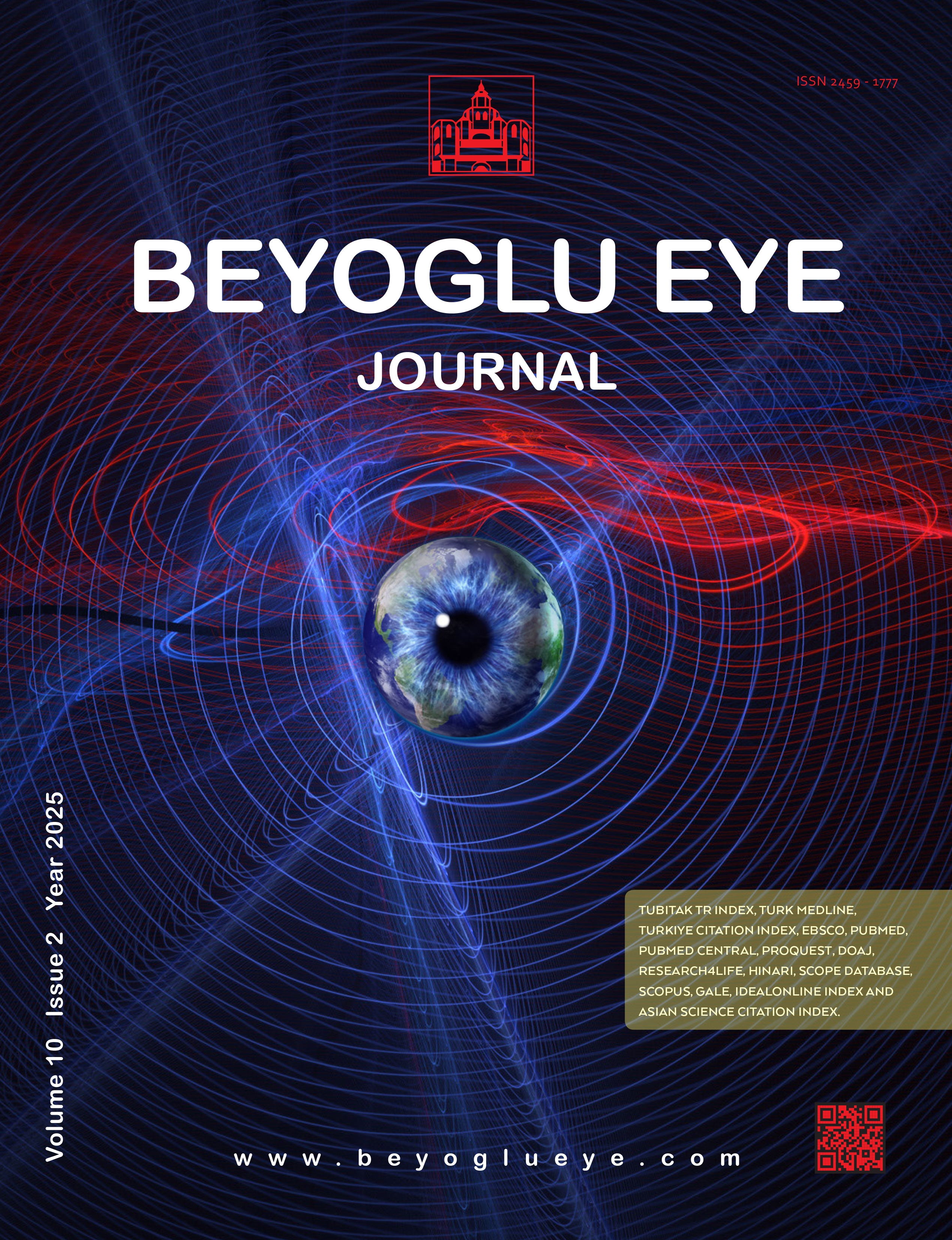
Thermal Pulsation Therapy (Lipiflow®): A Retrospective Analysis of Its Impact on Meibomian Gland Dysfunction and Dry Eye Disease
Emine Savran Elibol, Sezer HaciagaogluDepartment of Ophthalmology, Bahçeşehir University, Faculty of Medicine, İstanbul, TürkiyeOBJECTIVES: The study aimed to evaluate the short-term effects of thermal pulsation therapy on dry eye parameters and meibomian gland dysfunction (MGD) in patients with evaporative dry eye.
METHODS: A retrospective, single-center study included 250 eyes of 125 symptomatic patients with evaporative dry eye disease (DED) due to MGD. Patients received a single 12-min thermal pulsation therapy (LipiFlow®) (TearScience Inc., Morrisville, NC, USA). Before and at 1 and 6 months after treatment, the presence of DED and MGD was evaluated using the Schirmer-I test, tear break-up time (TBUT), oxfordstaining score, and meibomian gland secretion (MGS) score. Subjective dry eye complaints were measured using the ocular surface disease index (OSDI) score.
RESULTS: The LipiFlow treatment improved both clinical signs (Schirmer I test, Oxford staining score, MGS score, and TBUT, respectively, p=0.000, p=0.000, p=0.000, p=0.000) and symptoms (OSDI scores p=0.000) up to 1 month post-treatment. While TBUT and MGS scores (respectively p=0.008, p=0.035) continued to improve until the 6th month, im-provements in Schirmer I test, Oxford staining, and OSDI scores (respectively p=0.000, p=0.000, p=0.000) were sustained through 6 months.
DISCUSSION AND CONCLUSION: It has been observed that single-session thermal pulsation treatment provides improvement in MGD and dry eye parameters up to 6 months and decreases in OSDI scores, indicating subjective complaints of patients. This treat-ment is thought to be an effective treatment option in evaporative DED secondary to MGD.
Manuscript Language: English








